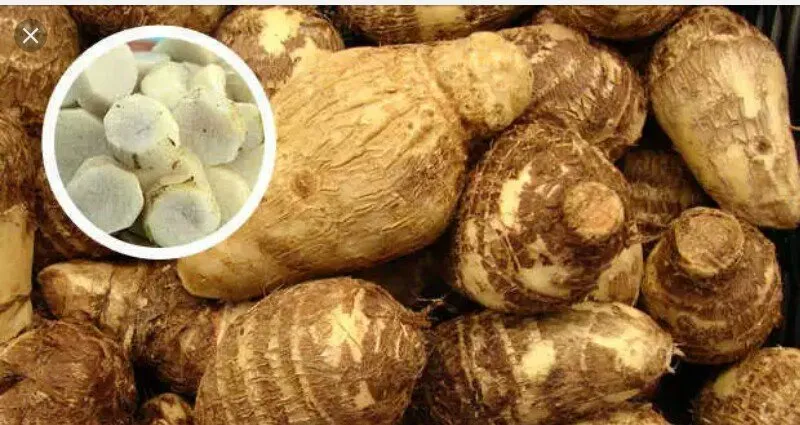
Cocoyam is not just rural delicacy. It'sa perennial, tropical crop, which belongs to the family of Aracease with species such as Xanthosona, Taro, Elephant's Ear and others. It's starchy tuber crop, stem and leaves, which is grown basically for it'sparts can be eaten, it is grown as an ornamental plant( for beautifying the environment) as well as for medicinal purposes.
Originating from India or south-east Asia as some researchers have found out cocoyam is a known staple crop in most developing countries of Africa. It can also be found in some developed countries of the world like U.S.A, Japan, Singapore, and India. This delicacy cab be boiled, roasted, made into chips by frying or cooked as porridge. It can also be pounded

and used as Thickener for some Local soups. Cocoyam leaves are very rich in protain and can be used as vegetables.

Aside from enjoying its various forms of delicacies, cocoyam nutritionally is a boundless source of dietary fiber. It is an excellent source of carbohydrate ( an energy giving food) and protein ( body building food). It also contains Thiamine, Copper, Calcium, Manganese and Vitamin E & A. It equally contains Riboflavin, Magnesium, Phosphorus, Iron, Zinc and Potassium.
Cocoyam is also vital for maintain a healthy immune system. For instance, dietary fiber aids a healthier digestive process. It protects the skin, prevents heart disease, lowers blood sugar levels and prevents lungs and oral cancer. It boosts vision, increases blood circulation, supports the muscle and nerves, helps relieve stress and decreases blood pressure.
However, cocoyam is very high in calories and can cause obesity when consumed excessively. Research has shown that it is toxic in raw form due to high content of oxalates. So it must be cooked properly before consumption.
(Adapted).
